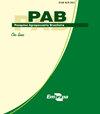不同皮下脂肪厚度屠宰牛肉质的meta分析
IF 0.7
4区 农林科学
Q3 AGRICULTURE, MULTIDISCIPLINARY
引用次数: 1
摘要
摘要本研究旨在通过荟萃分析,评价皮下脂肪厚度对牛肉品质性状的影响。本研究使用了来自13项研究的综合数据,包括在巴西屠宰的245头公牛尸体。所有参数的效应量以平均差或标准化平均差计算,概率为95%。I2>50%组和I26 mm组随机效应和固定效应进行meta分析。“高”组的胴体肌肉内脂肪沉积更多,而“低”组的胴体肌肉内脂肪沉积与对照组相似。当脂肪厚度低于推荐阈值3mm时,剪切力增大。皮下脂肪厚度值大于6毫米诱导了评估小组对压痛的感知的积极变化。皮下脂肪厚度超过6毫米的牛肉胴体往往会积累更多的肌内脂肪含量,消费者更容易接受。脂肪厚度小于3毫米的胴体会产生较硬的肉。本文章由计算机程序翻译,如有差异,请以英文原文为准。
Meta-analysis of meat quality of cattle slaughtered with different subcutaneous fat thicknesses
Abstract The objective of this work was to evaluate, through meta-analysis, the impact of subcutaneous fat thickness on beef qualitative traits. Combined data from 13 studies were used, comprising 245 carcasses of male bovines slaughtered in Brazil. Effect size for all parameters was calculated as mean difference or standardized mean difference, at 95% probability. The meta-analysis of random and fixed effects was carried out when I2>50% and I2<50%, respectively, for each indicator separately, with means for fat thickness, classified in the “control” (3–6 mm), “low” (<3 mm), and “high” (>6 mm) groups. Carcasses in the “high” group showed greater intramuscular fat deposition, whereas those in the “low” group presented an intramuscular fat deposition similar to that of the control. When the fat thickness was below the recommended threshold of 3 mm, shear force increased. Subcutaneous fat thickness values greater than 6 mm induced a positive change in the perception of tenderness by the panel of evaluators. Beef carcasses with a subcutaneous fat thickness over 6 mm tend to accumulate more intramuscular fat content and are tenderer for consumers’ acceptance. Carcasses with a fat thickness less than 3 mm produce tougher meat.
求助全文
通过发布文献求助,成功后即可免费获取论文全文。
去求助
来源期刊

Pesquisa Agropecuaria Brasileira
农林科学-农业综合
CiteScore
1.20
自引率
0.00%
发文量
45
审稿时长
9-18 weeks
期刊介绍:
Pesquisa Agropecuária Brasileira – PAB – is issued monthly by Empresa Brasileira de Pesquisa Agropecuária – EMBRAPA, affiliated to Ministry of Agriculture, Livestock and Food Supply. PAB publishes original scientific-technological articles on Plant Physiology, Plant Pathology, Crop Science, Genetics, Soil Science, Food Technology and Animal Science.
Its abbreviated title is Pesq. agropec. bras., and it should be used in bibliographies, footnotes, references and bibliographic strips.
 求助内容:
求助内容: 应助结果提醒方式:
应助结果提醒方式:


